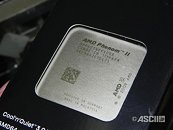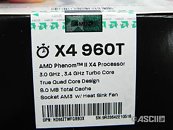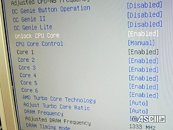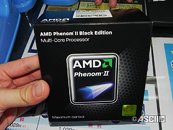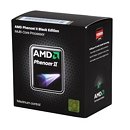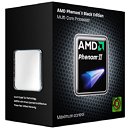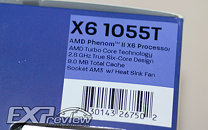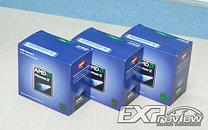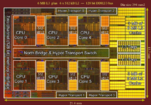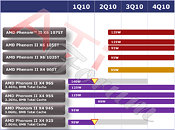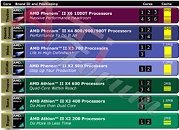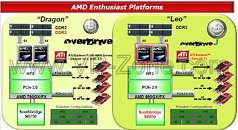
Turbo Core Equipped Phenom II X4 Chips Sold in Japan
When AMD was giving final touches to its desktop six-core processors, the Phenom II X6 series, there was also talk of a new quad-core processor line based on the same six-core Thuban silicon, but with two cores disabled. The resulting silicon was codenamed "Zosma". Apart from the two "potentially" unlockable cores, Zosma brought to table AMD's Turbo Core technology, which dynamically overclocks two of the four cores beyond the chip's rated speed, while respecting the chip's stock TDP value. The Phenom II X4 960T, one of the first such chips, however, never made it to the market, AMD shelved Zosma.
Market hounds in Japan recently spotted stocks of "Zosma" Phenom II X4 960T Black Edition, thought to have been shelved until now. This quad-core chip with unlocked BClk multipler comes with the part number HD96ZTWFK4DGR, and is sold in PIB (processor in a box) packages. The chip was tested to allow unlocking of the disabled fifth and sixth cores, proving it's based on the Zosma silicon. It comes with a stock clock speed of 3.00 GHz (15x 200 MHz), but can bump clock speeds up to 3.40 GHz (17x 200 MHz). The chip features 512 KB of L2 cache per core, and 6 MB of shared L3 cache.
Market hounds in Japan recently spotted stocks of "Zosma" Phenom II X4 960T Black Edition, thought to have been shelved until now. This quad-core chip with unlocked BClk multipler comes with the part number HD96ZTWFK4DGR, and is sold in PIB (processor in a box) packages. The chip was tested to allow unlocking of the disabled fifth and sixth cores, proving it's based on the Zosma silicon. It comes with a stock clock speed of 3.00 GHz (15x 200 MHz), but can bump clock speeds up to 3.40 GHz (17x 200 MHz). The chip features 512 KB of L2 cache per core, and 6 MB of shared L3 cache.
